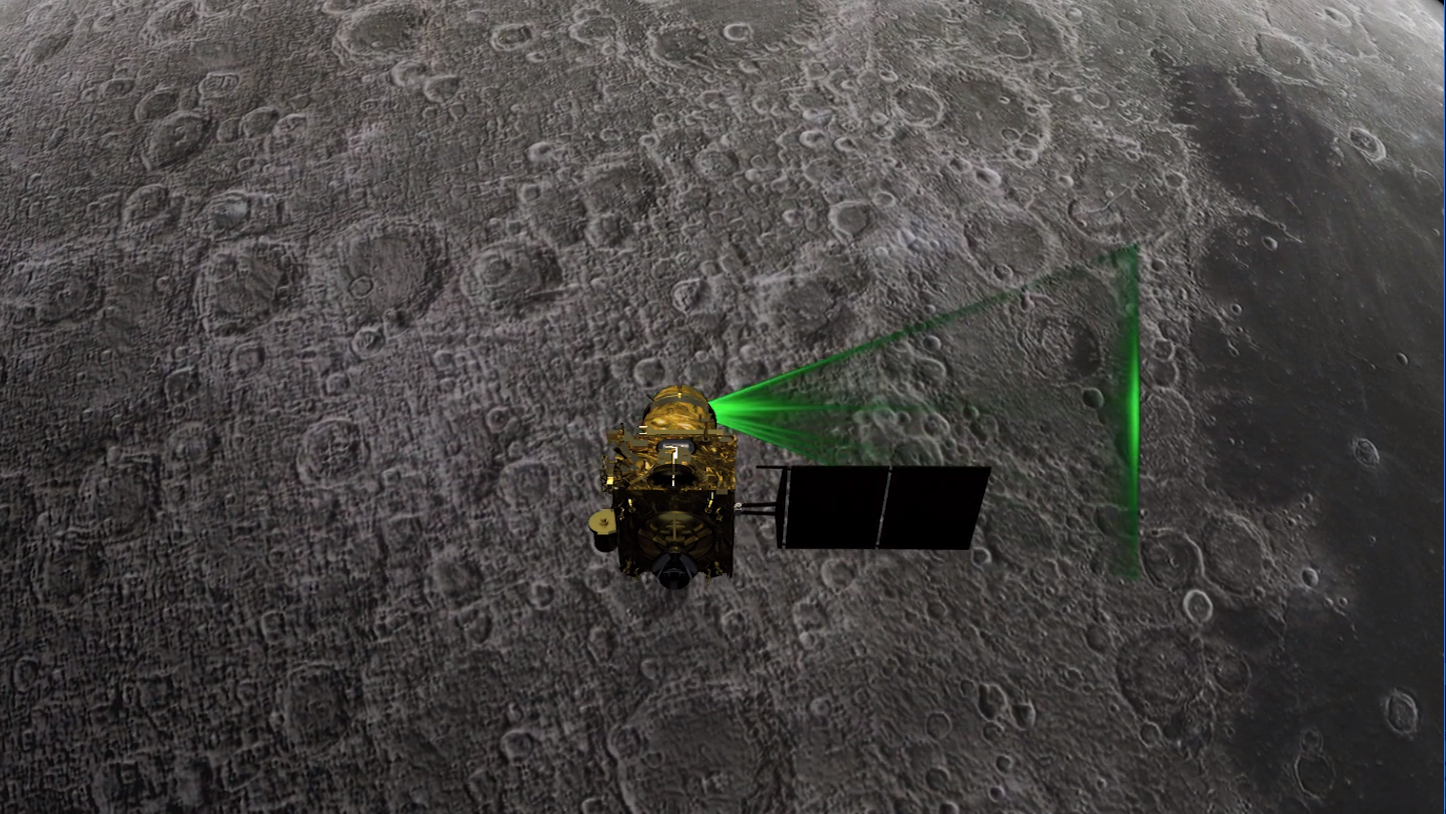India's Chandrayaan-2 moon mission hits 1-year mark in lunar orbit
It could last another seven years, ISRO says.

India's Chandrayaan-2 lunar orbiter has finished one year and 4,400 trips around the moon — and the spacecraft is just getting started, Indian space agency officials said Thursday (Aug. 20).
"The spacecraft is healthy and performance of subsystems are normal," the Indian Space Research Organisation (ISRO) announced in a statement Thursday. "There is adequate onboard fuel to remain operational for about seven years."
The ambitious spacecraft has been busy since arriving in lunar orbit on Aug. 20, 2019. First, Chandrayaan-2 attempted to deploy the first Indian-led lunar lander, called Vikram. While that lander failed to touch down safely, the lessons learned from the attempt will inform the design of upcoming missions, ISRO has said. Meanwhile, the Chandrayaan-2 orbiter has continued its work above the moon.
Related: India's Chandrayaan-2 mission to the moon in photos
After a year of operations, Chandrayaan-2 has mapped nearly 1.5 million square miles (4 million square kilometers) of terrain, according to ISRO. One area of interest was the Balmer-Kapteyn basin region, which includes a "light plains" deposit of lunar soil, or regolith, on top of an older, basaltic surface. This zone shows the changes that occur after meteorites slam into the moon's surface; nearby areas have a clear impact crater system that generated the fresher shower of dust.
Chandrayaan-2 also spotted small-scale tectonic landforms called lunar lobate scarps. These structures are thought to be young features on the moon, but are often hard to detect due to their small size, according to ISRO. The agency highlighted one that the spacecraft imaged in October 2019 in the Mare Fecunditatis region. NASA's Lunar Reconnaissance Orbiter (LRO) has also spotted such small faults, which show the gradual contraction of the lunar surface as the moon cools from its formation some 4.5 billion years ago.
More generally, India's spacecraft regularly gathers high-definition imagery and science data concerning the moon's surface, which assist in interpreting geologic features — as well as in figuring out future landing spots for anyone designing a lunar mission. NASA plans to land people on the moon in 2024, and other agencies are also considering moon-landing programs, both crewed and robotic, in the coming years.
Get the Space.com Newsletter
Breaking space news, the latest updates on rocket launches, skywatching events and more!
Orbital radars on Chandrayaan-2 are continuing to gather observations of lunar water ice at the poles — a possible resource for future missions. Mission officials are working with archival data gathered by LRO and Chandrayaan-1 and looking to better understand where and in what form water ice can be found on the moon, according to the statement.
"The first-year observations from Chandrayaan-2 demonstrate the in-orbit performance of payloads, strongly indicating its ability to contribute significantly to lunar science," ISRO added. "The anticipated long life of this orbiter can contribute much to the current resurgence of interest among the global scientific community for a sustained presence on the moon."
Some of the other investigations the spacecraft has performed include detecting signatures of argon-40 (confirming observations during the Apollo moon program of the 1960s and 1970s) and mapping the mineralogy of certain regions of the moon, such as Mare Tranquillitatis, an area that includes the first human moon landing site, where Apollo 11 touched down in 1969.
Chandrayaan-2 even indirectly monitors solar activity, providing additional observations for scientists trying to figure out how space weather affects Earth. On May 29, for example, ISRO reported that its spacecraft caught the sun shooting out the second-strongest flare of 2020 to date when Chandrayaan-2 captured secondary X-rays from fluorescence on the moon, as the lunar surface reflected the solar activity.
In January, India committed to launching a successor mission to Chandrayaan-2, called Chandrayaan-3, although that mission's timeline hasn't been confirmed yet. India's first moon mission Chandrayaan-1 launched in October 2008 and ended in August 2009.
Follow Elizabeth Howell on Twitter @howellspace. Follow us on Twitter @Spacedotcom and on Facebook.
Join our Space Forums to keep talking space on the latest missions, night sky and more! And if you have a news tip, correction or comment, let us know at: community@space.com.

Elizabeth Howell (she/her), Ph.D., was a staff writer in the spaceflight channel between 2022 and 2024 specializing in Canadian space news. She was contributing writer for Space.com for 10 years from 2012 to 2024. Elizabeth's reporting includes multiple exclusives with the White House, leading world coverage about a lost-and-found space tomato on the International Space Station, witnessing five human spaceflight launches on two continents, flying parabolic, working inside a spacesuit, and participating in a simulated Mars mission. Her latest book, "Why Am I Taller?" (ECW Press, 2022) is co-written with astronaut Dave Williams.
